The ultimate
virtual organ
B-3 V captures all the grit, grind, and greatness of the classic tonewheel organ and rotary speaker, then adds modulation, FX, and sound design options perfect for modern music.
Vital to rock, jazz, gospel, R&B, soul, reggae, and house, the iconic organ could go from gentle to roaring on a dime. Players carried the 400-pound beast to gigs. Any serious studio had to have one. With B-3 V, you’ll have all the character and attitude of the genuine article in a form that fits seamlessly into today’s musical workflows.
Yesterday, Meet Tomorrow
First things first: B-3 V takes this organ’s incredible legacy seriously. But the power of software also performs tricks you couldn’t dream of on the original.
Absolutely Authentic
We’ve precisely modeled the tonewheel organ’s components and how they interact using the same TAE® technology as in our award-winning V Collection, resulting in an instrument that not only sounds but behaves just like the real thing.
Whisper to Scream
Craft lilting ballad tones or pull more drawbars, crank up the tube preamp drive, and rock out. B-3 V delivers.
Round in Circles
The rotary speaker is a crucial part of the spacious sound we know and love, and B-3 V’s built-in emulation reproduces it with unparalleled accuracy.
Stage and Studio
Record tonewheel tracks that fit perfectly in your project mix or take advantage of B-3 V’s CPU efficiency onstage. (Warning: Keyboardists in the crowd will demand to know what you’re playing!)

The muscle car of
keyboards
“That sound” even non-musicians recognize. Loved by jazz greats Jimmy Smith and Shirley Scott; rockers Keith Emerson, Yes, Deep Purple, and Santana; and soul giant Booker T. Jones.
A staple of reggae. The bassline on countless house tracks. And it was never supposed to be any of that.
The creators of the tonewheel organ saw it as the centerpiece of the family living room and a solution for churches that could not afford pipe organs. The world had larger plans.
The tonewheel organ was the brainchild of clockmaker Laurens Hammond and inventor John Hanert, who together released the first version in 1935. The most recognizable and sought-after model, the B-3, had an amazing production run from 1954 to 1974.
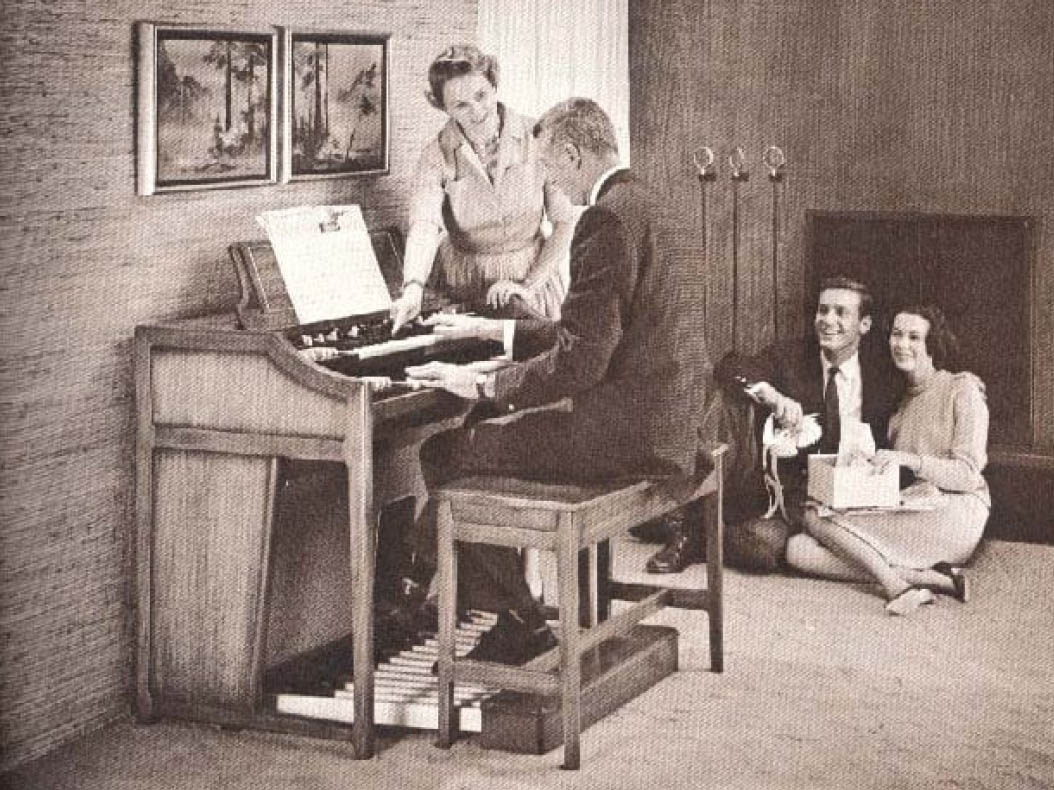
Mechanical
perfection
B-3 V emulates every step of this machine’s complex mechanical process for a virtual instrument that doesn’t just sound like the real thing - it behaves like it too.
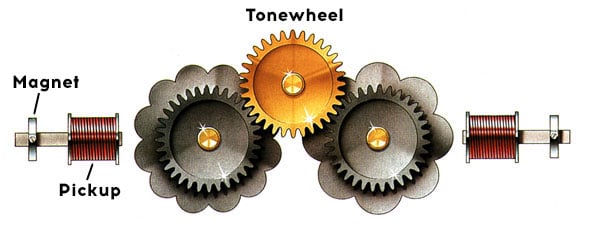
The B-3 V’s namesake was electromechanical, combining spinning tonewheels with pickups to produce flute-like tones in octaves and harmonics for each note. These could be variably mixed via a set of 9 drawbars per manual for a variety of additive timbres, from soft and airy to pronounced and resonant.
But the B3 had a number of distinguished features up its sleeve. The percussion feature, which added a quickly-decaying sound at the second or third harmonic, gave each key press an edgy attack, perfect for solos and rhythmic playing. The unique modulation feature offered three different depths of vibrato or intensities of chorus.
The B to
a Tee
Control layout and appearance exactly like the original.
When you’re emulating an instrument this legendary, there are some things you just don’t mess with. That’s why the drawbars, rocker switches, and other controls are located exactly where organists expect them to be. They look the part, too.
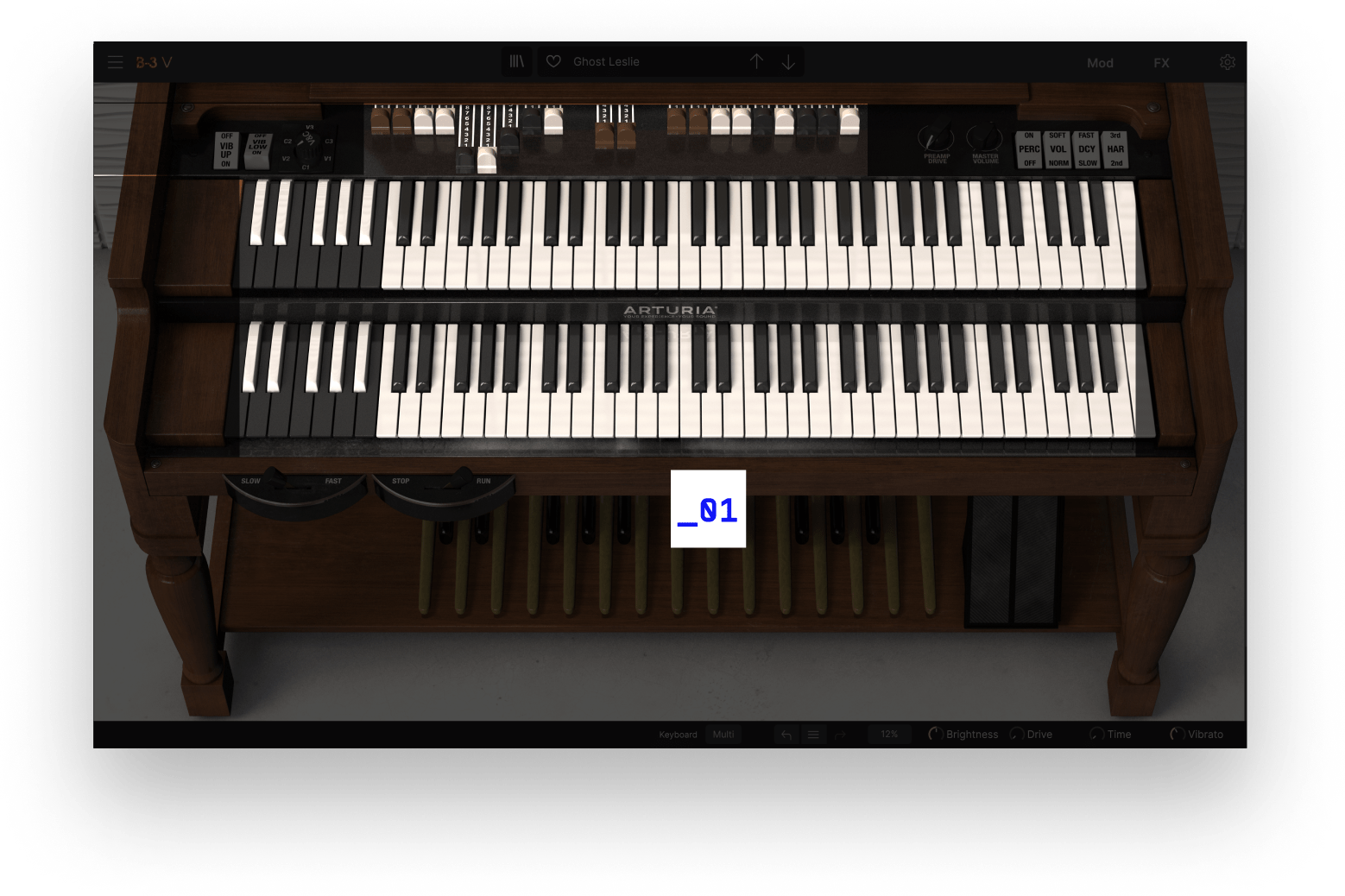
Upper, pedal, and lower drawbars proceed left to right across the center.
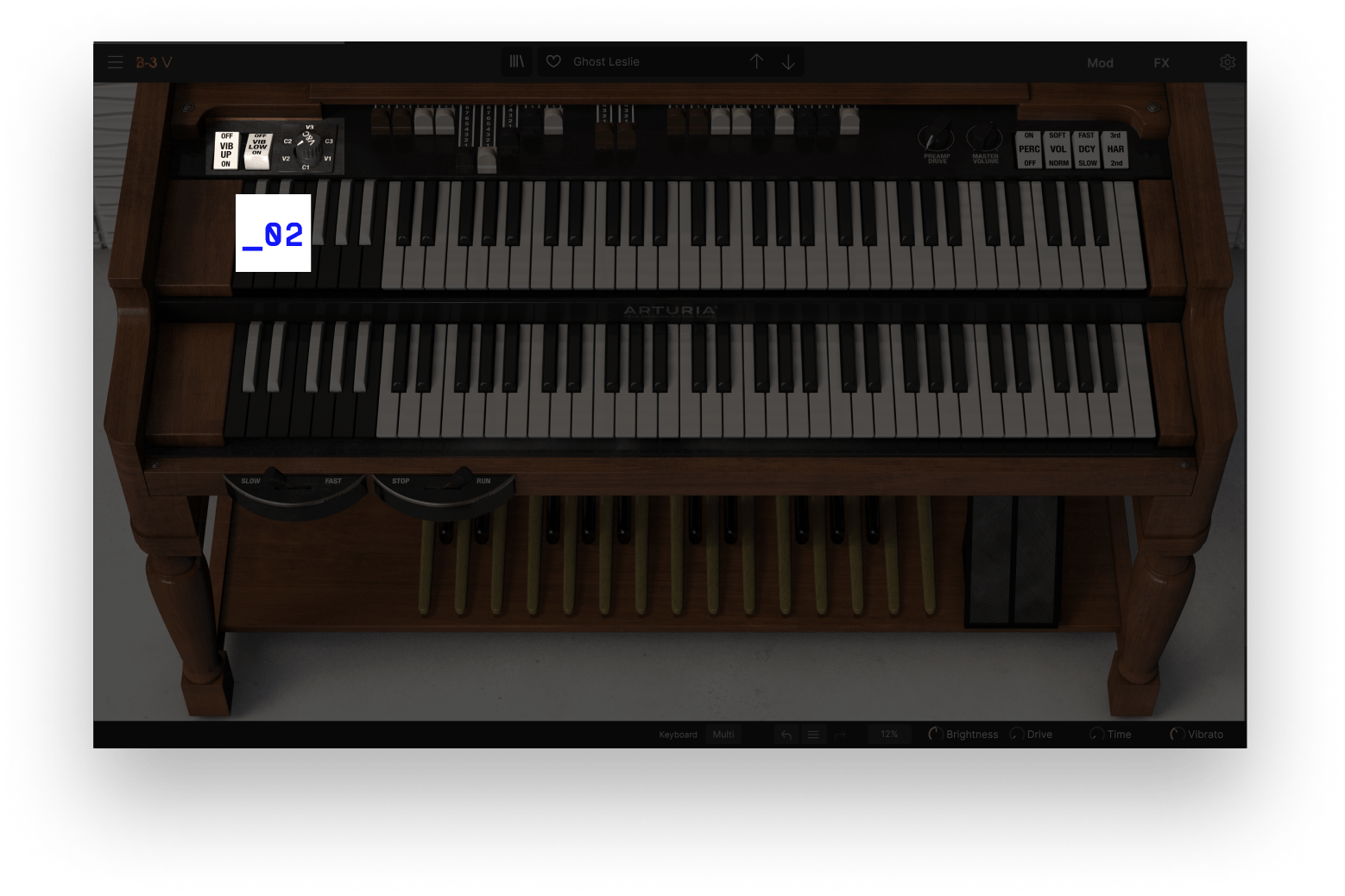
The mechanical scanner vibrato is exquisitely modeled and assignable to the upper and lower/pedal manuals separately. Chorus modes duplicate the ever-popular thickening effect.
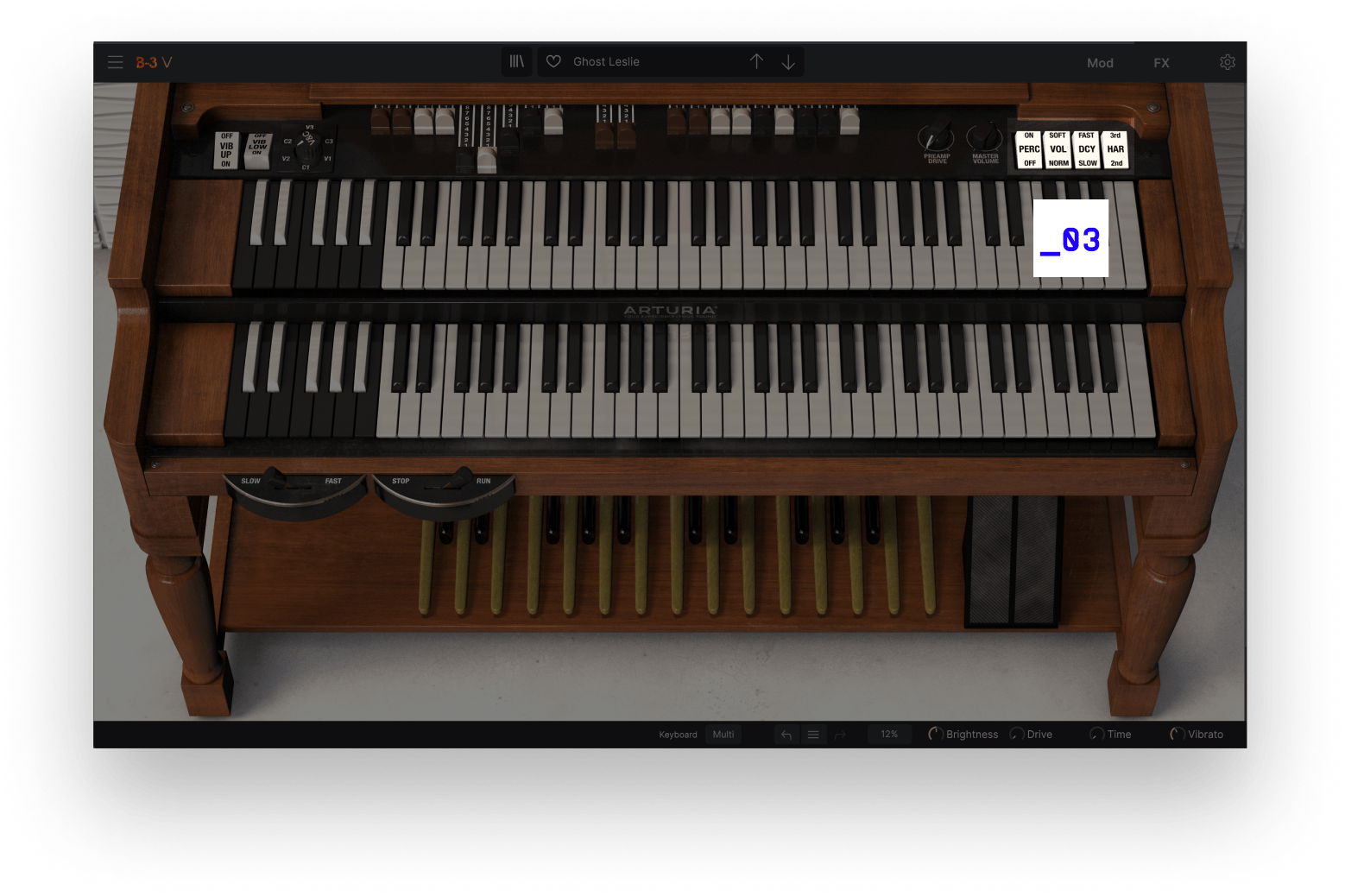
The single-triggered ping so endemic to jazz and rock solos is likewise captured, with tabs for on/off, volume, decay, and harmonic at the upper right.
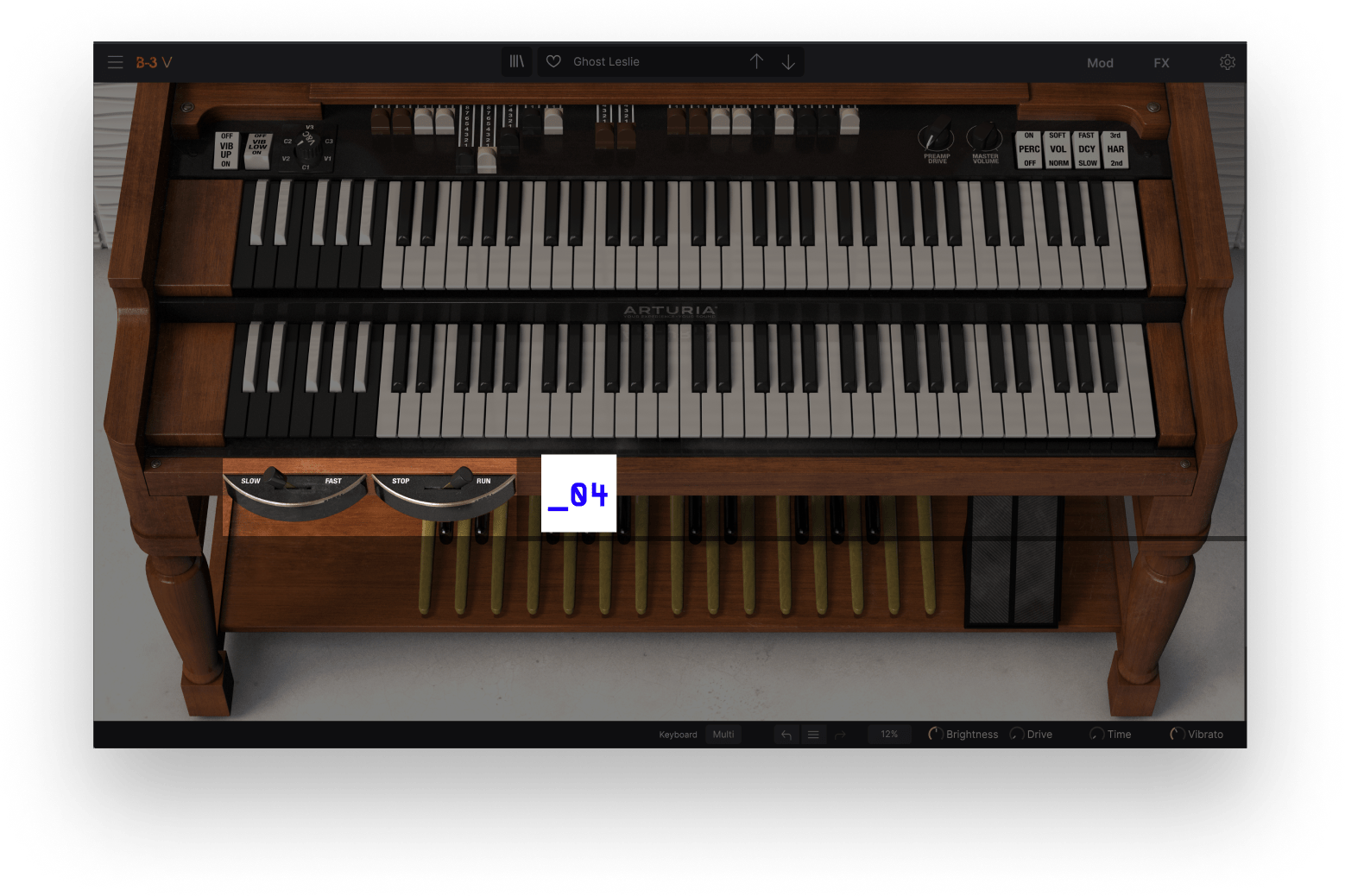
Realistic “half-moon” switches toggle the rotary speaker’s slow (chorale) and fast (tremolo) speeds, or stop the spinning altogether — an effect used by fusion organist Brian Auger.
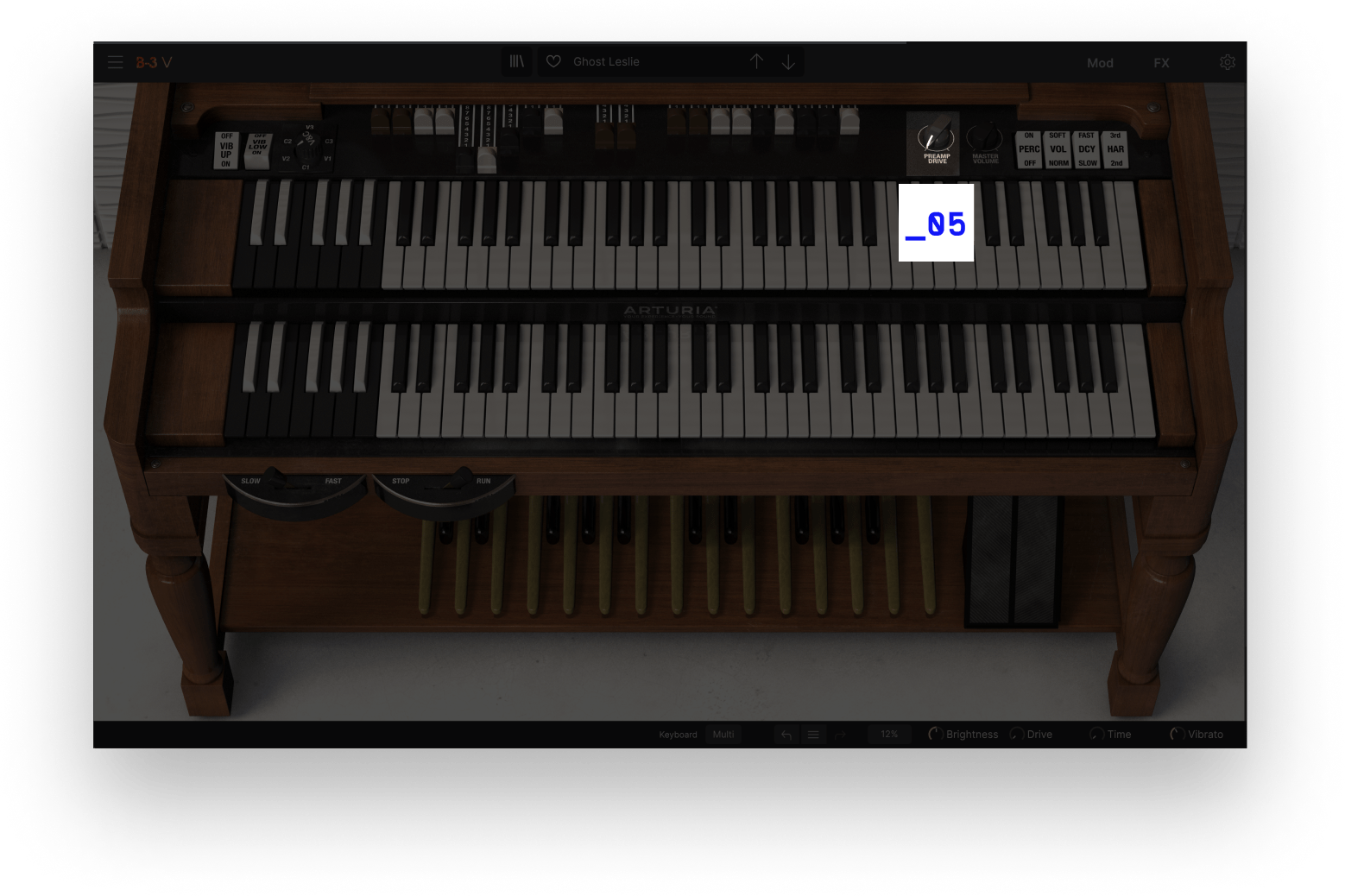
Turn up the warm crunch of the original AO28 tube preamp with this Arturia exclusive.
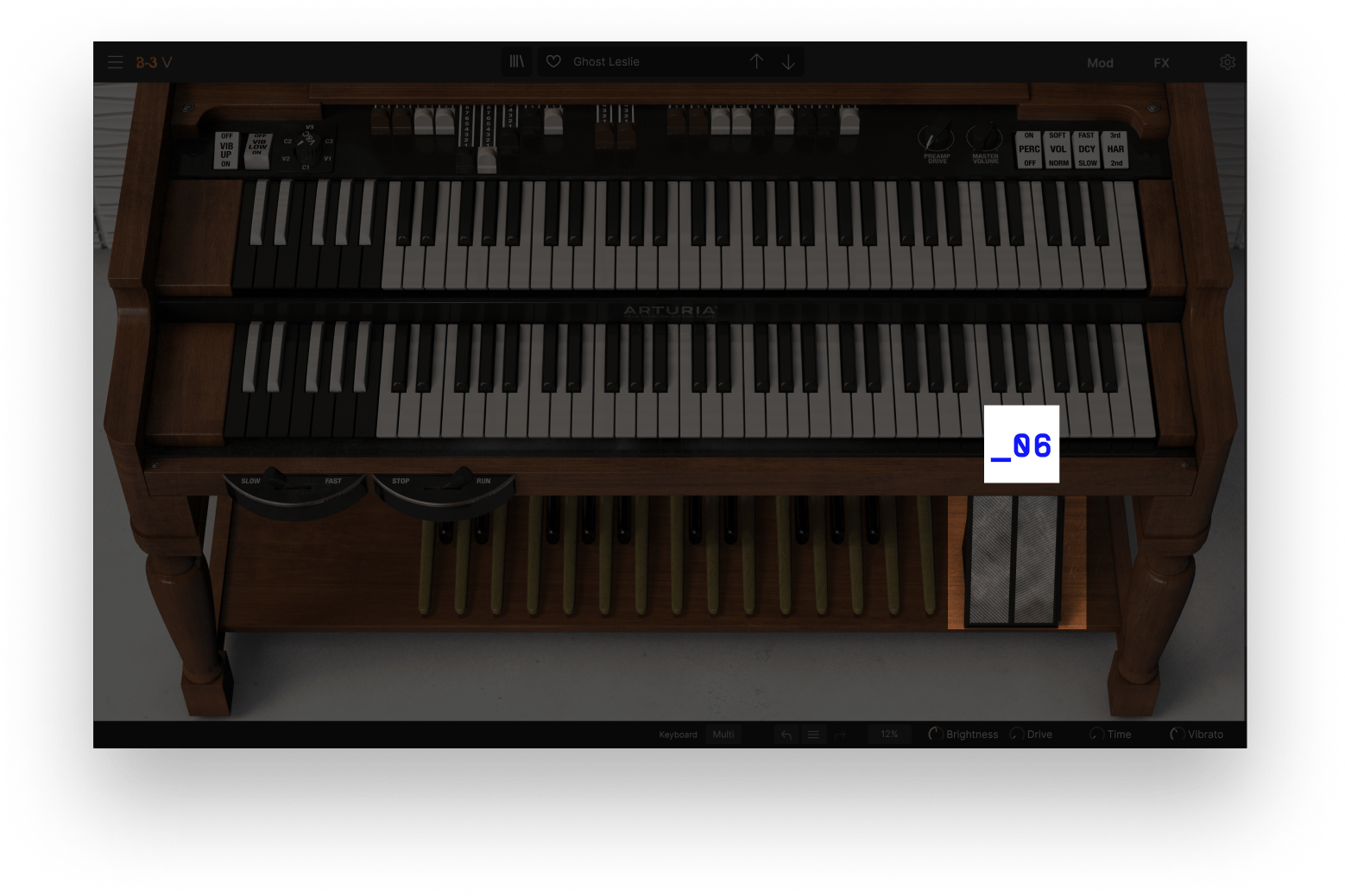
Like the original, it preserves more low frequencies at softer volumes, optimizing the sound for how the human ear perceives loudness.

Create the ultimate organ controller rig by addressing the upper, lower, and pedal manuals on separate MIDI channels.
Modern
Mods
Today’s tech makes this B better.
The Mod panel gets you under the hood of B-3 V in ways that would have required a soldering iron on the original — or not been possible at all.
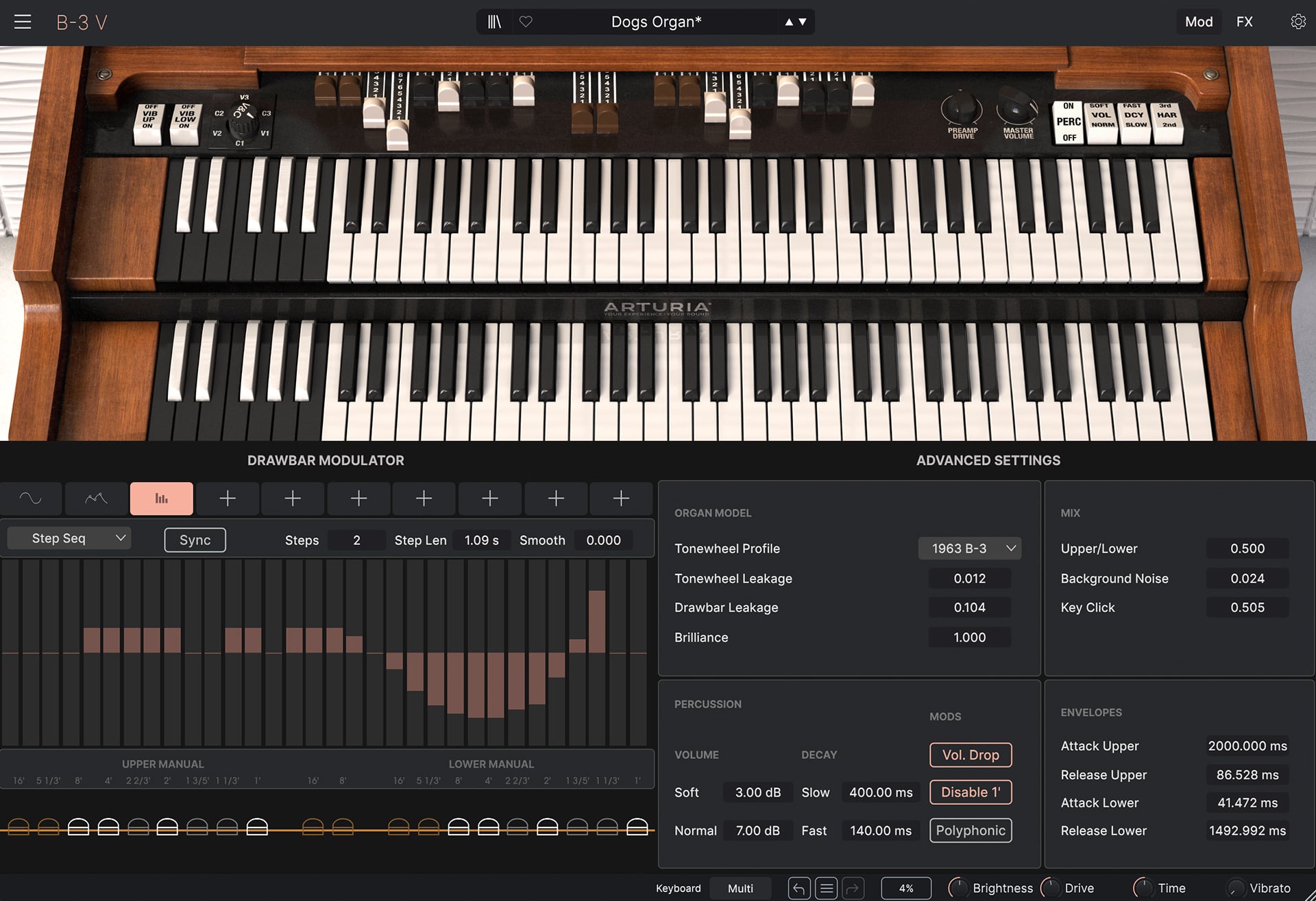
_1
_2
_3
_4
_5
01. Organ Model
Go back in time with several vintages and models, and control exactly how much leakage (tonewheels and drawbars being picked up by their neighbors) occurs.
02. Percussion
Set exact decay times for the harmonic percussion, plus whether it drops the upper manual’s volume and/or “steals” the 1' drawbar as it did on the hardware.
03. Mix
Balance the upper and lower manuals and all-important Key Click, a slight static pop beloved by jazz and rock players.
04. Envelopes
Keep the instant on/off envelope of the classic, or increase attack and release times for more of a church organ sound
05. Drawbar Modulator
This powerhouse tool is like having up to ten extra hands to work the drawbars as you play, with movement from an LFO, multi-point envelope, or step sequencer.
A Studio Worth of
FX Power
Tweak the rotary speaker, rack up a pedalboard, and put B-3 V in virtual acoustic spaces.
B-3 V’s generous FX section lets you design the finished organ sound in your mind’s ear, all within a single instance of the plug-in.

Switch between Rotary Speaker and Twin Amp modes for ultimate tonal flexibility. Shape your sound with drive, reverb, EQ, and tremolo controls, delivering authentic vintage warmth.
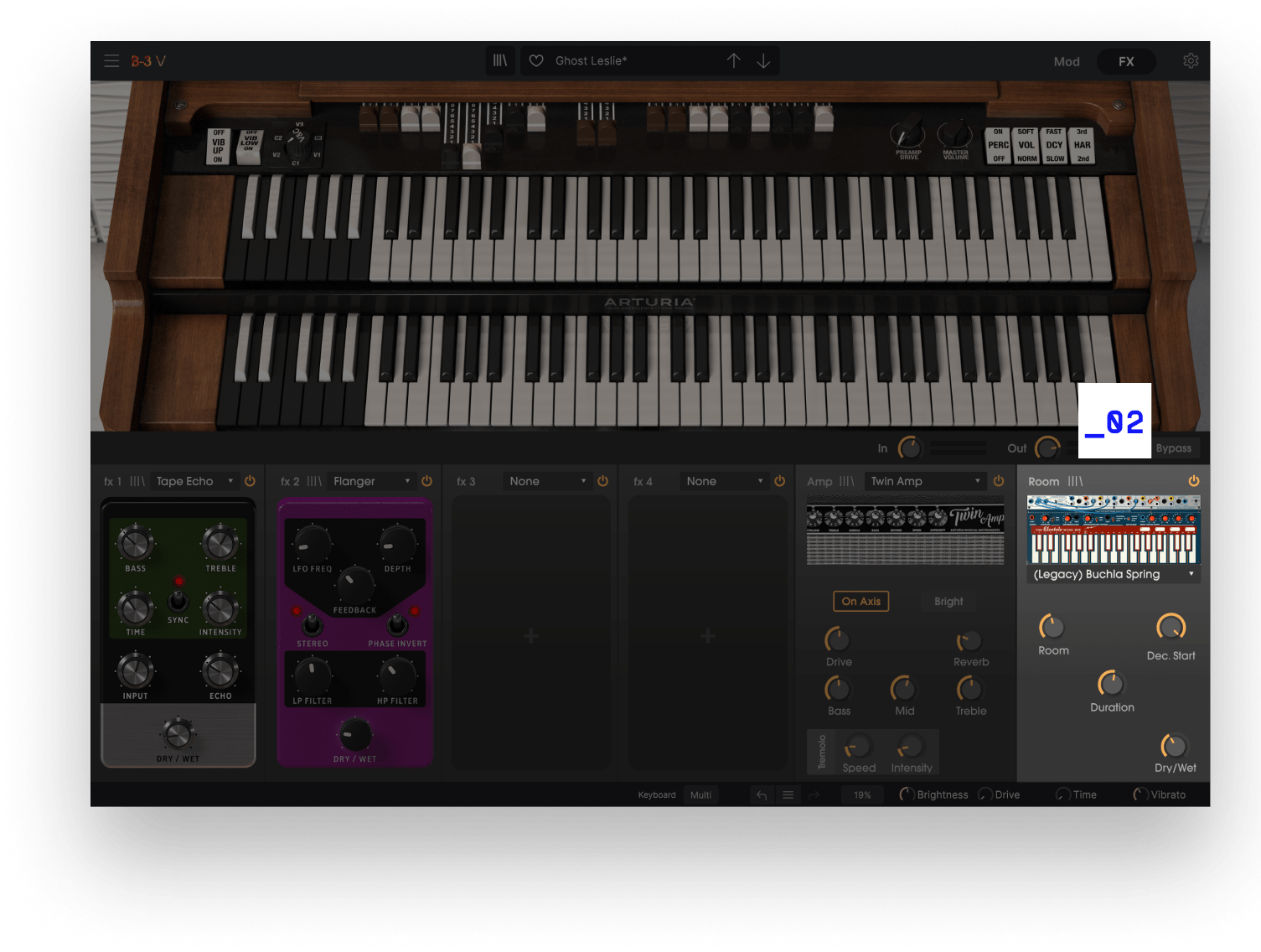
Pick a room for the ideal ambience. B-3 V also simulates plate, spring, and modern hardware studio reverbs.
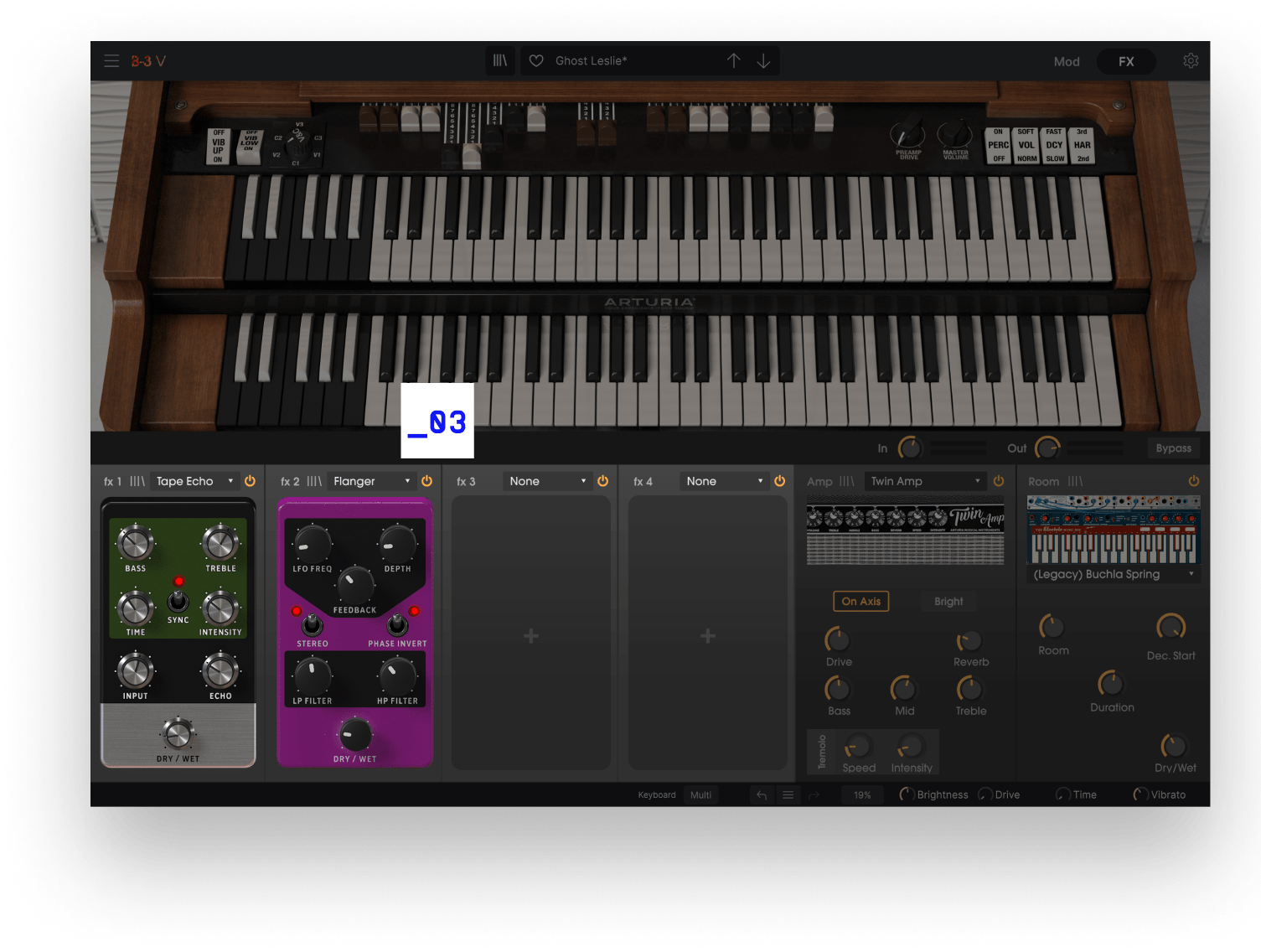
13 effects profiles to choose from to enhance and personalize the tone of B-3, from spatial effects, to distortion, dynamics and sound-widening modulations.
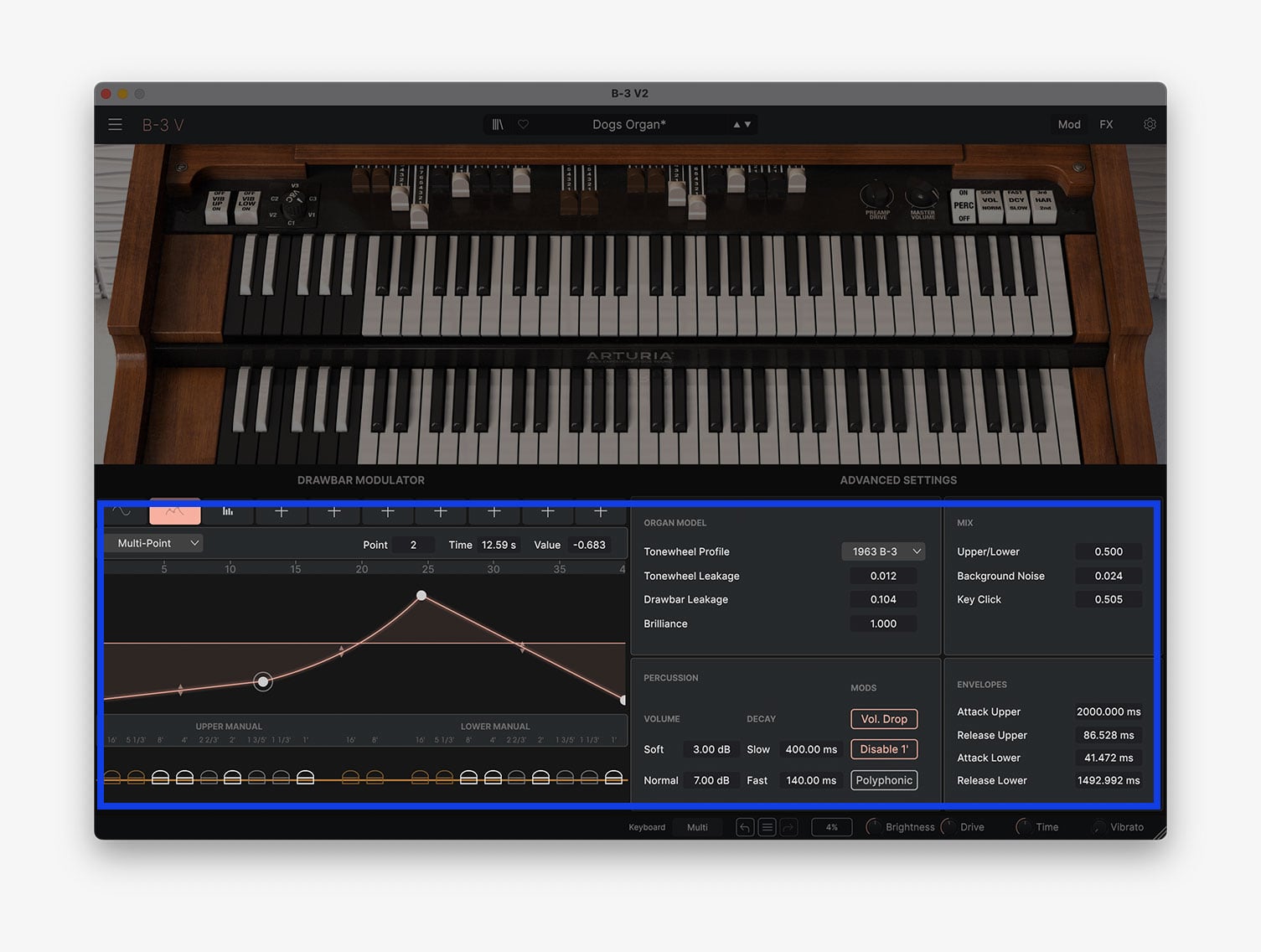
Go back in time with several vintages and models, and control exactly how much leakage (tonewheels and drawbars being picked up by their neighbors) occurs.
Hear it
in action
Part of what made the B so appealing was its flexibility — with the right drawbar settings it could work in literally any style of music.
These sound demos show how B-3 V is more flexible still.
Last Minute_Jam
Organ from the B-3V using one of the classic presets. Bassline comes from Mini V3. Electric piano sounds courtesy of the Stage-73 V.
Black Bug
Classic 60s Organs
Classic 70s Organs
Snake Eyes
Low B
Presets
Explore creations by the world’s foremost sonic artisans with B-3 V’s easy easy-to-use Preset Browser.
We are privileged to work with some of the best sound designers in the world. Search, tag, and filter their wares by type and style, and experience just how many different organs B-3V can be. Then, create your own Presets and add rich descriptions!

Artistscorner
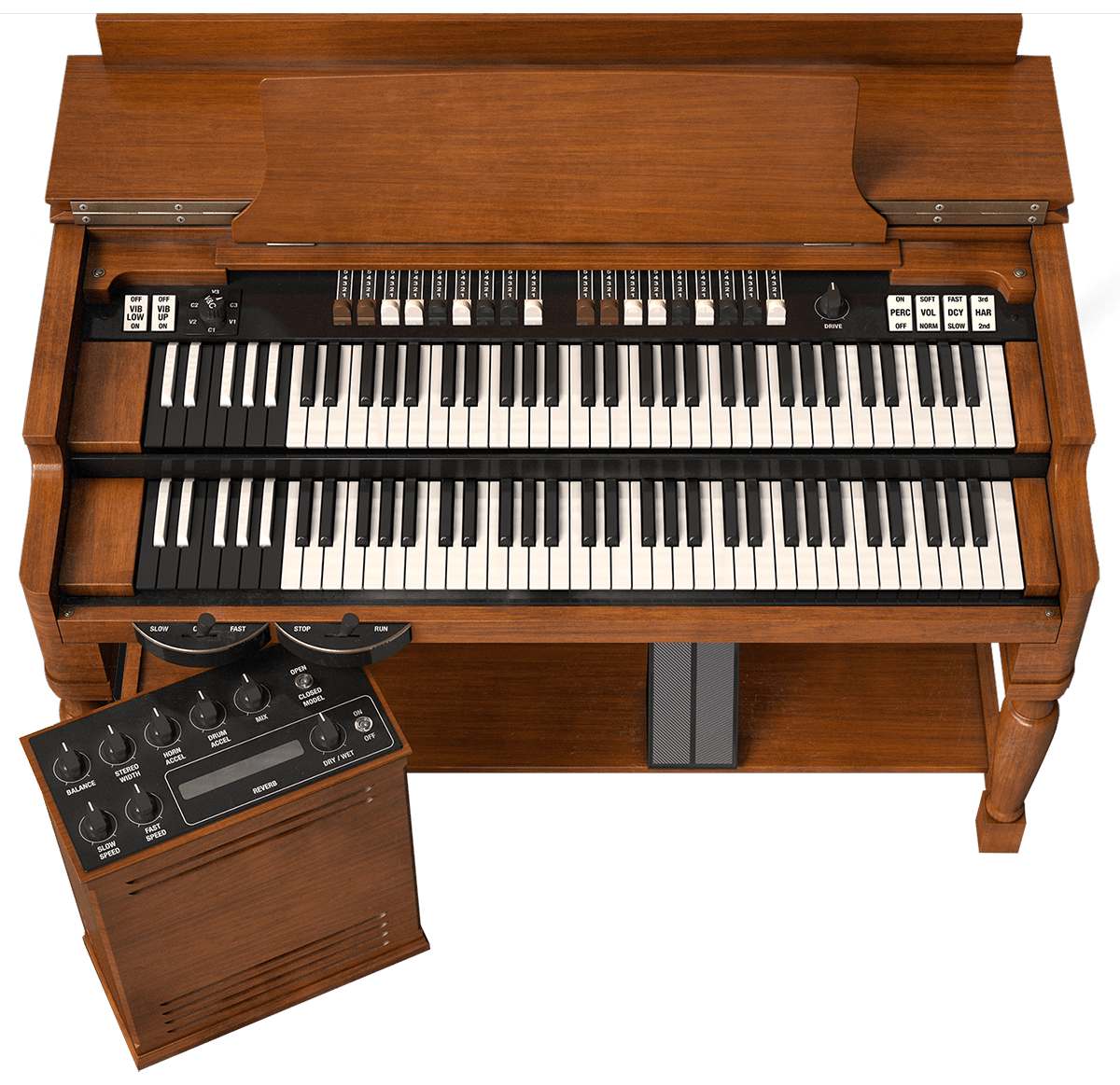
Included in
V collection
Legendary Keyboards Reinvented
This instrument is also part of the V Collection -your complete dream line-up of the legendary synths, organs, pianos and more that made keyboard history. They’re modeled with the most advanced technologies for authentic realism, and enhanced with new creative options. Whether you use it as DAW plugins in the studio or standalone at gigs, V Collection puts the greatest keys of all time at your fingertips for instant inspiration.
Learn More
The features
you need

Integrated in-app tutorials guide you through every aspect of the instrument, from individual parameters to tips from our sound designers, so you can focus on the creative stuff. It shouldn't be this easy, but it is!

Arturia Software Center lets you download, organize, and update all of your Arturia software titles in one place, as well as manage all of your licenses across multiple devices. Keep it simple.

Our virtual instruments and plugins are designed to fit right into your setup without hassle. Whatever your style, you can explore sound while enjoying full compatibility with major DAWS, on both Windows and MacOS.

Instantly find the sound that’s in your head with intelligent & streamlined preset browsing. Search with keywords, explore by instrument type, musical style, and more - you can even save your favorites to quickly recall later.

Whether you want the full visual immersion of our classic instrument emulations, or to save precious screen real estate, the interfaces for all of your Arturia virtual instruments can be resized to a scale that suits you.

Instruments come seamlessly mapped for the Arturia KeyLab range - but they’ll place nice with other MIDI controllers too. Instant sound tweaking macros, easy DAW integration, and standalone operation.
TAE® Powered
The exclusive analog modeling technology that makes our emulations indistinguishable from the originals.
By accurately mimicking the characteristics of analog oscillators, filters, and soft clipping, we can provide astonishing component-accurate detail and authentic analog charm in equal measure.
Learn more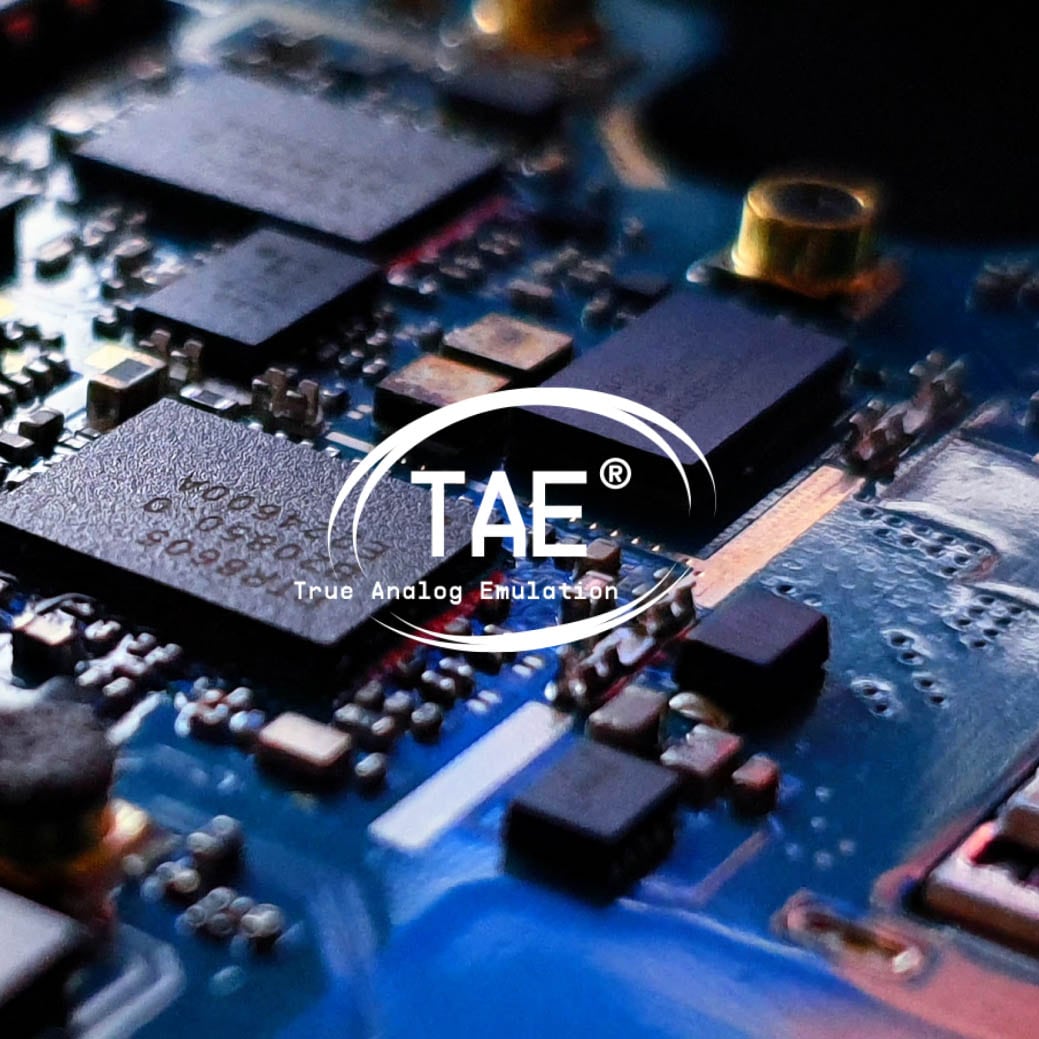
Gallery
Main Features
Physical Modeling Engine (no samples)
Dual manual Interface
Each manual has separate MIDI channel preferences
9 Drawbars per manual
3 modeled chorus and vibrato settings
Separate upper and lower ON/OFF
Preamp drive
Modeled rotary speaker emulator
Advanced controls for adjusting the model
Convolution based Reverb
Traditional Leslie performance controls
Swell pedal
Percussion controls
- On/off
- Volume soft/normal
- Slow/Fast decay
- Harmonic selection
Output effects where you can change the order
- Volume, wah, auto-wah
- Flanger
- Compressor
- Chorus
- Analog Delay
New Advanced Drawbar modulators
- LFO’s with multiple waveforms and phase
- Multipoint envelopes
- Step sequencer
- Drawbar destinations with positive and negative amount controls
Mod view
- Drawbar leakage
- Tonewheel leakage
- Brilliance
- Background noise
- Polyphonic Percussion
- Key click volume
- Attack and release controls
50 factory presets
Easy to use MIDI mapping
Platform specifications
Windows
- Win 10+ (64bit)
- 4 GB RAM
- 4 cores CPU, 3.4 GHz (4.0 GHz Turbo-boost)
- 3GB free hard disk space
- OpenGL 2.0 compatible GPU
- ARM processors not supported on Windows
Required configuration
- Works in Standalone, VST, AAX, Audio Unit, NKS (64-bit DAWs only).





Apple
- Mac OS 11+
- 4 GB RAM
- 4 cores CPU, 3.4 GHz (4.0 GHz Turbo-boost) or M1 CPU
- 3GB free hard disk space
- OpenGL 2.0 compatible GPU
Work with ASC
- An elegant and simple solution to help you install, activate, and update your Arturia software instruments.
All manufacturer and product names mentioned on this page are trademarks of their respective owners, which are in no way associated or affiliated with Arturia. The trademarks of other manufacturers are used solely to identify the products of those manufacturers whose features and sound were studied during the development. All names of equipment, inventors, and manufacturers have been included for illustrative and educational purposes only, and do not suggest any affiliation or endorsement by any equipment inventor or manufacturer.

